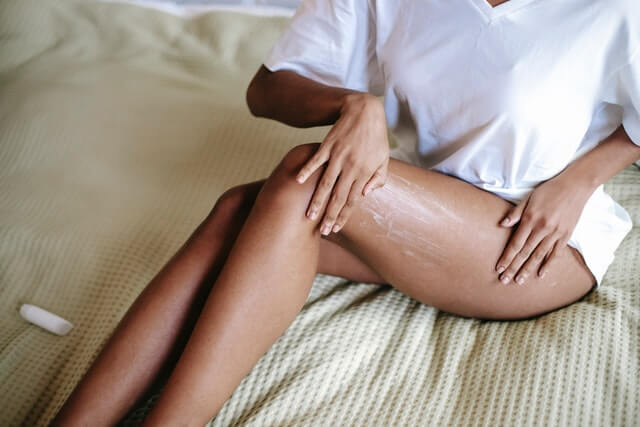
Certaines perfectionnistes prennent soin d’éliminer les poils disgracieux même en hiver. D'autres se contentent de faire la chasse aux poils seulement à la belle saison. Mais quand on a la peau mate à foncée, face à la problématique de taches pigmentaires post-épilation, il faut rester vigilante. En voulant simplement avoir une peau nette, on peut s'exposer, sans le savoir, à un risque d’hyperpigmentation important.
Connaître les causes de l’apparition de ces taches inflammatoires est indispensable pour faire évoluer sa séance d’épilation, sans forcément révolutionner ses habitudes. Soyez rassurée, il est possible de se débarrasser de ses poils avec les techniques classiques du rasoir, de la crème dépilatoire ou de la cire. Mais vous devrez simplement veiller au respect de certains gestes essentiels.
Entre idées reçues et véritables astuces, nous vous expliquons comment garder une belle peau douce et unifiée cet été… ou toute l’année !
ÉPILATION DES PEAUX FONCÉES : COMPRENDRE L’ORIGINE DE L’HYPERPIGMENTATION
L’hyperpigmentation sur la peau mate à foncée provient de différents facteurs. Le rasage et l’épilation sont à l’origine de taches dites post-inflammatoires. En effet, ces techniques soumettent l’épiderme à divers risques : poils incarnés, irritations, boutons, coupures et cicatrices. Il est cependant possible d’y recourir tout en évitant ces imperfections cutanées.
Comprendre le phénomène permet d’adapter sa routine d’épilation aux besoins spécifiques des peaux foncées.
LES POILS INCARNÉS CRÉENT DES TACHES INFLAMMATOIRES
L’épilation traditionnelle et le rasage conduisent souvent à la formation de poils incarnés au niveau du maillot, des jambes ou des aisselles. Ce phénomène se révèle gênant et disgracieux, car il cause des douleurs, des démangeaisons, des irritations et une éruption cutanée.
Le poil incarné, sorti de son follicule, ne parvient pas à passer le niveau du derme. Cela se produit plus fréquemment avec des poils fins ou frisés et/ou une peau dotée d’une couche cornée épaisse. Les épidermes très secs sont aussi plus concernés. Les orifices sont alors bouchés par des squames. Les peaux foncées peuvent réunir ces facteurs simultanément. En climat tempéré, leur tendance à la sécheresse peut même s’accentuer et aggraver le phénomène, car l’air est beaucoup moins humide qu’en zone intertropicale.
Dès lors, au lieu de sortir naturellement à la surface de la peau, le poil continue sa croissance sous le tissu cutané. Il dévie de sa trajectoire initiale pour s’entortiller dans le canal. L'espace étant trop étroit pour accueillir cette spirale, un gonflement se crée.
Cela peut entraîner une infection, s’il n’est pas nettoyé et traité correctement. Dès lors, la petite boule formée par le poil incarné peut devenir douloureuse. Il est fortement déconseillé de la percer pour éviter par la suite des marques inesthétiques (tache, cicatrice).
En cas de complications, il est même préconisé de consulter un dermatologue. Selon le cas, celui-ci va prescrire une crème anti-pilotique, des antibiotiques (prise locale, orale) ou encore extraire le poil avec une aiguille stérilisée. Une séance de laser épilatoire est éventuellement proposée.
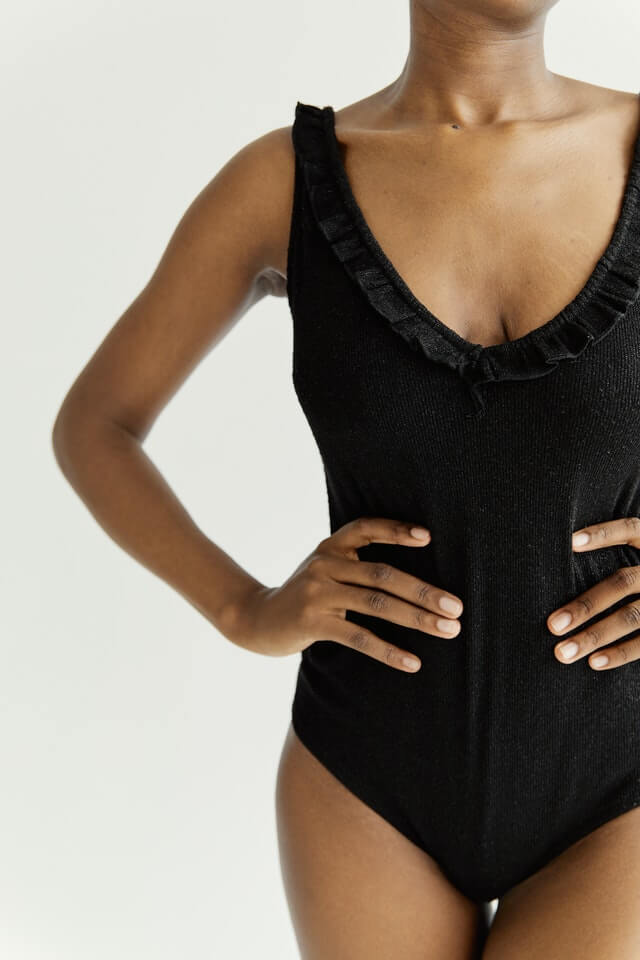
Chez les femmes, cette problématique cutanée se situe plus particulièrement au niveau du maillot ou des aisselles. Ces zones sensibles sont alors plus susceptibles de développer des irritations et une hyperpigmentation. Et malheureusement, ce risque de taches augmente fortement pour les peaux mates, métisses et foncées.
À noter : en cas de kystes récurrents sur ces parties vulnérables, un suivi en cabinet de dermatologie est indispensable. Ne tentez pas de vous soigner seule, certaines affections requièrent parfois des traitements particuliers.
LES TACHES FORMÉES SUITE AUX COUPURES LORS DE L’ÉPILATION AU RASOIR
Le rasoir est doté de lames tranchantes. Cet outil d’épilation est efficace, mais il comporte un danger de coupures ou de lésions cutanées. Sur une zone étendue ou fragile, si on fait preuve de précipitation ou d’inattention, le risque de blessures augmente naturellement.
En cas d’incident, la plaie est susceptible de s’infecter et des microbes peuvent y proliférer. Pour les peaux claires, nettoyées sans délai, ces petites coupures sont sans conséquence. Sans réelle gravité, elles cicatrisent très vite. Mais pour les peaux mates à foncées, la cicatrisation peut s’avérer difficile et plus longue. Ces blessures entraîneront, alors la formation de taches pigmentaires.
Deux parties du corps demandent une grande vigilance : les demi-jambes, particulièrement au niveau des chevilles et des genoux et le maillot. Pour la première, cela s’explique par la présence des protubérances osseuses plus délicates à appréhender. Pour la zone intime, le rasage peut être plus complexe. Le geste nécessite des précautions en raison des nombreux plis, d’une visibilité réduite et de la finesse de la peau.
EMPÊCHER LA FORMATION DE TACHES BRUNES LORS DE L’ÉPILATION
Dans la routine d’épilation ou de rasage, des soins de préparation se révèlent incontournables pour empêcher les taches d’origine post-inflammatoire. Ils agissent directement sur la cause principale de leur formation : le développement des poils incarnés. Ensuite, l’hydratation post-épilation associée à un traitement ciblé contre l’hyperpigmentation permet d’effacer les taches récentes ou installées et d’éviter l’émergence de nouvelles.
AGIR SUR LES POILS INCARNÉS À L’ORIGINE DES TACHES PIGMENTAIRES
Que l’on ait la peau blanche, mate ou noire, la lutte contre les taches dues à l’épilation, commence par empêcher la formation des poils incarnés. Il est donc préconisé de s’attaquer de manière préventive à cette affection dans le cadre des différentes méthodes, y compris le rasage. C’est un moyen efficace d’agir concrètement à la source, pour diminuer leur apparition, voire l’éradiquer.
Pour atteindre cet objectif, le premier soin consiste à bien désinfecter la zone, avant de faire la chasse aux poils ! Que l’on privilégie l’épilation à la cire froide ou chaude, à la crème dépilatoire ou au rasoir, cette étape préparatoire reste capitale pour tous les types de peaux.
Lors de ce rituel, le gommage doux va ensuite assainir la peau en profondeur. Il va la débarrasser des impuretés et des cellules mortes susceptibles d’obstruer les pores. Il est aussi possible de s'exfolier avec une brosse spécial corps sur peau sèche, avant de se glisser sous la douche pour se rincer et se laver au savon.
Dès lors, ce nettoyage approfondi va favoriser une repousse normale en évitant la naissance de nouveaux poils incarnés. Le massage au gant de crin est en revanche déconseillé. Beaucoup trop agressif pour les peaux foncées, il peut même être à l’origine des taches brunes.
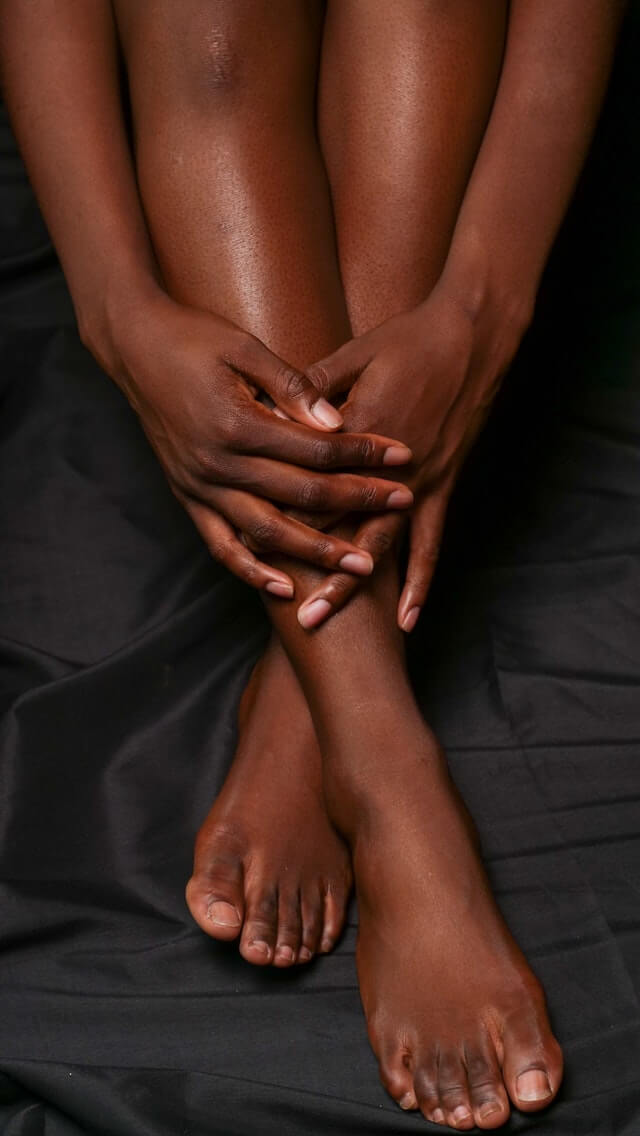
MAÎTRISER LES GESTES DE L’ÉPILATION AU RASOIR POUR ÉVITER LES BLESSURES
Pour éviter les taches dues aux microcoupures, en complément des soins classiques relatifs à l’épilation, il faut suivre les conseils propres au rasage féminin :
- Choisir un outil équipé de lames fines, conçu pour les femmes !
- Changer fréquemment la tête de son rasoir au bout de 5 à 10 utilisations
- Utiliser un gel, une mousse à raser ou un savon surgras pour protéger la peau
- Raser dans le sens de la pousse du poil
- Faire un gommage 48 heures après l’épilation
En parallèle, il est important de noter que certaines zones nécessitent plus de dextérité et d’attention comme celle du maillot. Si vous manquez de temps ou que vous êtes sujette aux maladresses, privilégiez une autre méthode d’épilation.
Enfin, pour éviter l’apparition de boutons, nous vous rappelons l'un des conseils de base pour une peau douce et unifiée : ne vous exposez pas au soleil juste après le rasage, même avec une crème solaire !
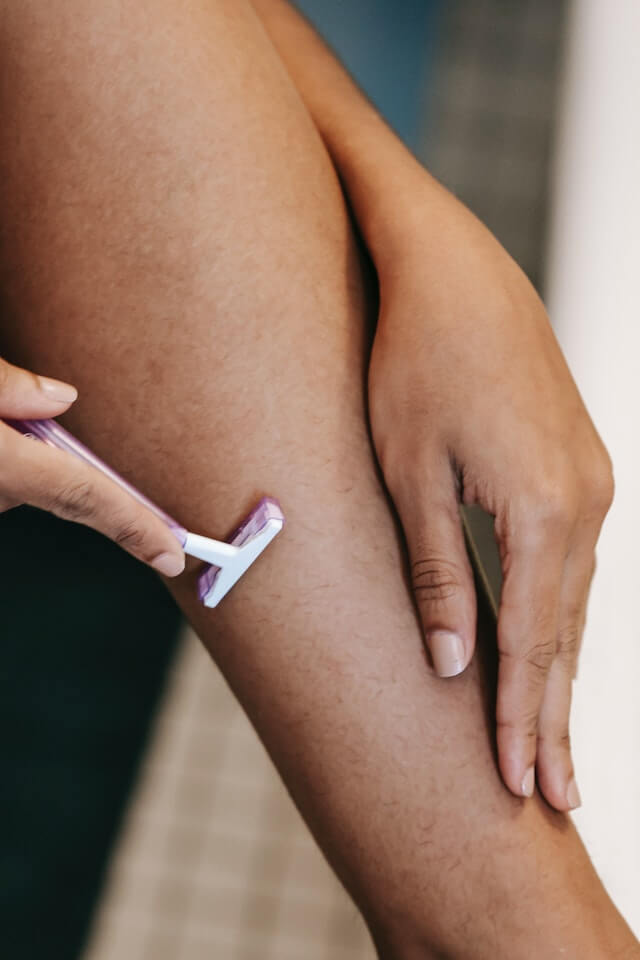
PRENDRE SOIN DE SA PEAU POST-ÉPILATION : HYDRATATION ET CIBLAGE ANTITACHES
Parfois sous-estimée dans la lutte contre les taches pigmentaires, l’hydratation est en fait capitale après une épilation, quelle que soit la méthode choisie. L’application d’une huile nourrissante (amande douce, argan, etc.) ou d’un lait pour le corps ne se limite pas au jour J.
En effet, le manque d’hydratation avant et après l'épilation est souvent l’un des facteurs responsables des poils incarnés. En toute logique, si ce problème n’est pas traité correctement à chaque étape, il en résulte inévitablement des cicatrices.
Ce geste beauté, fréquemment oublié de la routine d’épilation, est donc primordial avant et plusieurs semaines après. Au quotidien, appliquez la crème hydratante sur l’ensemble du corps. Le massage va à la fois assouplir l’épiderme et le soin apportera les éléments nutritifs essentiels à son éclat originel.
Le lait hydratant peut lui-même intégrer une action unifiante, sans toutefois être éclaircissant. En effet, restez prudente sur la sélection de votre produit cosmétique pour éviter une formule nocive, aux répercussions potentiellement graves pour la peau.
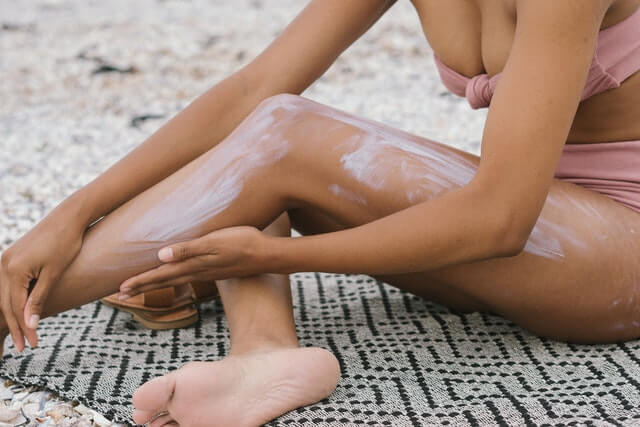
Si l'hyperpigmentation d’origine inflammatoire est déjà installée, sa prise en charge passe par un traitement antitaches spécifique. Le soin hydratant post-épilation peut être renforcée par un soin ciblé, conçu pour venir à bout de cette problématique des peaux mates à foncées. Et n’oubliez pas d’appliquer votre protection solaire avant chaque exposition. C’est le 1er geste antitache des peaux mates, noires et métissées par excellence !
Enfin, de plus en plus de femmes se tournent vers une solution innovante qui évite efficacement les problèmes de taches : l’épilation définitive au laser. Auparavant inadapté aux peaux foncées, ce procédé esthétique et médical est exclusivement réservé aux dermatologues. Désormais, grâce aux dernières avancées technologiques, cette approche convient aussi à la peau noire et métissée et à ses spécificités.


